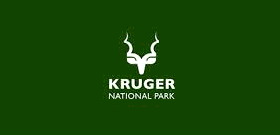 Kruger National Park Begins Reconstruction on Key Safari Route After Severe Flood Damage
Kruger National Park Begins Reconstruction on Key Safari Route After Severe Flood Damage
The reconstruction of the vital H4-1 road in Kruger National Park is officially underway, following confirmation from South African National Parks (SANParks). Work on this crucial artery, which was severely affected by recent floods, began on 18 August 2025. The repair project is scheduled for completion by April 2026, with visitors advised to continue relying on the current bypasses and temporary routes until then.
This significant infrastructure development comes at a time when the park’s accessibility is more important than ever for both domestic and international tourism. The H4-1 road, a tarred stretch of approximately 43 kilometers, connects Skukuza Rest Camp to Lower Sabie Rest Camp, two of Kruger’s most popular rest camps. The road is more than just a transport link—it’s the lifeline of the southern section of the park, running parallel to the Sabie River and providing travelers with some of the most scenic and wildlife-rich drives in the region.
Safari enthusiasts and park visitors are drawn to the H4-1 for its rich biodiversity and scenic landscapes. The route winds through lush riverine forests and dense thorn thickets, granting access to prime game viewing areas. Along this road, sightings of leopards, baboons, vervet monkeys, and a wide variety of birds—including Wahlberg's Eagle and the White-crowned Lapwing—are common. The road is also a gateway to celebrated picnic spots such as Nkuhlu and Sunset Dam, both favorites among families and wildlife photographers.
The impact of the recent floods has been felt throughout Kruger National Park, with multiple roads suffering significant damage. While SANParks teams have worked tirelessly to reopen several affected routes, others—including the H4-1—have remained closed or are only partly accessible due to the extent of repairs needed. The decision to launch a full-scale reconstruction underscores the strategic importance of the H4-1 not only for tourism but also for effective park management and conservation efforts.
For operators and businesses across sub-Saharan Africa, Kruger’s robust infrastructure is a benchmark for driving sustained tourism growth. The park’s ability to rapidly mobilize resources and begin major repairs speaks to the professionalism of SANParks and its commitment to maintaining Kruger’s reputation as a top-tier safari destination. The restoration of the H4-1 will further reinforce Kruger’s position as a premier wildlife experience, encouraging longer stays and greater visitor satisfaction during the high and shoulder seasons.
Until the reconstruction is complete, SANParks has emphasized the importance of visitor safety. Guests are being asked to use the designated bypasses and temporary roads, and to adhere strictly to all detours and road closures. These temporary measures have been designed to ensure minimal disruption to the safari experience, but visitors are reminded that conditions can change rapidly, especially during the rainy season. Park management continues to monitor road conditions and will provide updates as the project progresses.
The ongoing repairs highlight the vulnerability of Africa’s natural heritage sites to extreme weather events, a trend that is expected to intensify with climate change. For Africa’s travel sector, the need to invest in resilient infrastructure has never been more urgent. Projects like the H4-1 reconstruction serve as a reminder that maintaining accessibility is central to the sustainability of wildlife tourism and the communities that depend on it.
For the broader industry, the reopening of the H4-1 will signal a return to normalcy for one of the continent’s most iconic safari corridors. The road’s rehabilitation will once again allow seamless movement between Skukuza and Lower Sabie, restoring access to sought-after wildlife sightings and enhancing the overall visitor experience. This, in turn, is expected to stimulate bookings for lodges, guided tours, and other services along the southern routes of Kruger National Park.
As Kruger continues to evolve in response to environmental challenges, the park’s proactive approach provides valuable lessons for other protected areas across Africa. The emphasis on swift action, clear communication with visitors, and prioritization of critical infrastructure ensures that Kruger remains resilient in the face of adversity. These measures are crucial for maintaining strong visitor numbers and safeguarding the park’s status as a cornerstone of conservation and ecotourism in southern Africa.
The coming months will be critical as construction teams work to restore full functionality to the H4-1. Through ongoing collaboration between SANParks, local businesses, and the broader African tourism sector, Kruger National Park is poised to emerge stronger, more accessible, and even better equipped to deliver unforgettable safari adventures for years to come.
